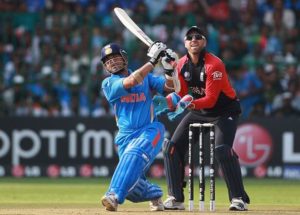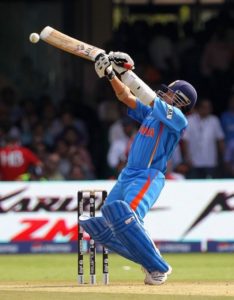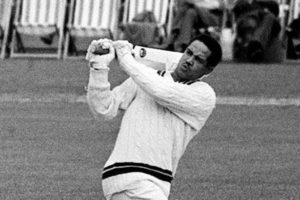When maximum is not maximum

By Kersi Meher-Homji
It is cricket season now and let’s welcome it with the most heart-lifting experience in this sport. I mean the special six appeal when, to quote English poet EV Lucas “a batsman jumps to meet one and a sixer climbs the sky.”
Even the most level headed commentator gets excited and yells “It’s maximum” meaning it’s a six when Virender Sehwag, Adam Gilchrist, Garry Sobers, Chris Gayle, Yuvraj Singh, Virat Kohli, Brendon McCullum, Vivian Richards, Rohit Sharma, Lokesh Rahul and David Warner jump out for a big hit and a sixer hits the sky.

When doing research on tall hitting in my book Six Appeal, I found that a hit for a six is not the maximum number of runs one can get with one hit. In the Super-8 competition played in Malaysia and Australia in 1996, a hit over the boundary was awarded eight runs and not six. This was not at Test or first-class level. And of course there are overthrows resulting in eight or more runs off one hit at all levels.
When playing in a Governor’s Cup match in Malta on 28 May 1903, Lt-Col Philip Mitford ran 11 runs from one scoring shot, wrote Bill Frindall in Guinness Cricket Facts and Feats.
Reports on maximum runs taken off one ball has to be taken with a pinch of salt. According to Michael Jones in ESPNCricinfo, “Cricket has built up more than its fair share of urban legends over the years. Just as with any other subject, some of them are so far-fetched and easily proved false, it’s surprising that anyone could believe them at all.”
The story of a hit for 286 runs in 1893-94 has been repeated countless times over the years and is probably the most popular answer when the question of most runs taken off one ball comes up. But it appears to be a myth, nothing more than an invention of the Pall Mall Gazette.
Before 1910 in England, a hit over the fence counted only four runs in first-class and Test cricket. Only a huge hit right out of the ground (including the stands), which happened rarely, was awarded six runs. However in Australia, hits over the boundary line were credited with five runs and the batsman lost the strike.
The Australian team raised this point with its Board for the 1905-06 Test series and the Board decided that a hit over the boundary should count as six.
Now coming to present day cricket and the ever popular IPL matches.
Noted Indian journalist Bipin Dani wrote in Mid-Day yesterday that KL Rahul, India’s Test batsman and captain of King’s XI Punjab in IPL 2020, suggested that more runs should be awarded to sixes which go beyond a distance of 100 metres. “If someone hits a six over 100 metres, more runs should be given for it,” he told India’s and Royal Challengers Bangalore captain Virat Kohli during a recent Instagram Live chat.
However, two former Test greats, who have famously hit six sixes in an over, are against this suggestion. West Indian Garfield Sobers and South African Herschelle Gibbs both disagree with Rahul.

Sobers achieved a perfect six sixes off an over at Swansea in 1968.
“Tomorrow, some other batsman will demand more than four runs for a boundary if it’s struck with more power. You can’t have that,” Sobers told Dani over the phone from Barbados. It may be recalled that Sobers was the first man to achieve the six-sixes-in-an-over feat in first-class cricket match in England way back in 1968. “We’ll need to build bigger grounds, use different bats and wickets [to have more runs for a bigger six]. Though the game has changed a lot from the time it was played in our era, if this change is made, the entire scoring pattern will change. The whole scenario will change,” the legendary Sobers added.

Sir Garfield Sobers opines on sixers, “Tomorrow, some other batsman will demand more than four runs for a boundary if it’s struck with more power. You can’t have that.”
Gibbs, the first batsman to hit six sixes in an over in ODIs in the 2007 ICC World Cup match against Holland, opined, “A six is a six and it makes no difference how far it goes. They should make the boundaries longer, a standard size of 75 metres. That will give bowlers a better chance and the mishits won’t go for sixes. In the T20 format, the boundaries are too short. This one change [longer boundaries lines] will make things fairer for bowlers.”
What do readers of TIDU say to these suggestions?
Short URL: https://indiandownunder.com.au/?p=15517
